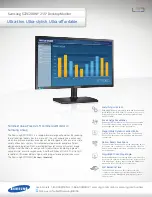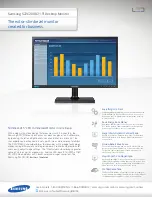
Keithley DAS-1700 Series
Using the DAS-1700 Series with DriverLINX
•
45
Burst Generator: Internal Clocking
An internally clocked Burst Generator produces a dual frequency clock with a fixed
number of tics at a high frequency repeated at a lower frequency.
Use an internally clocked rate generator when you want to acquire analog input
samples from a several channels at closely spaced time intervals and then repeat at
longer intervals.
How to set up the DAS-1700 Series for burst mode sampling using an internal clock.
For hardware independence,
specify the clock channel
using the symbolic constant,
DEFAULTTIMER, which
always maps to the default
Logical Channel for analog
input timing.
•
Specify internal clocking using a
Burst
Generator on Channel
0
with
the
Internal 1
Clock source. See “Counter/Timer Subsystem” on page
101 for a description of clock sources.
•
The Period property specifies the time interval between bursts in tics,
where an
Internal 1
tic is 0.2
µ
s, or 5 MHz. The minimum period is 30
tics, or 162.5 kHz (100 tics or 50 kHz for HR models). The maximum
period is 4294967295 tics (
2
1
32
−
), or 0.000116 Hz.
•
The On time property specifies the time interval between samples. It
must be within the range of 6
µ
s (30 tics) minimum (20
µ
s for DAS-
1700HR) to 64
µ
s (320 tics) maximum. Also On time
×
Pulses must be
less than or equal to Period.
•
The Gate property specifies how the TGIN signal affects the operation
of the internal clock. Valid settings are Enabled, Disabled, High Level
and Low Level. See “Counter/Timer Subsystem” on page 101 for a
description of each Gate setting.
StockCheck.com
















































